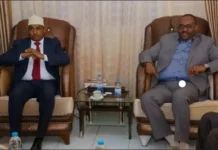A two-month time-frame extension (new end date 11 August 2019) is being requested to finalize implementation of activities. Delays in implementation are due to procurement and tender process of the financial service provider and approval of the DREF due to changes required to the operational strategy.
Pending activities are the third and final cash distribution to the 850 families being targeted in Sahil and Adwal, post-distribution monitoring of the second and third cash distributions and lesson learned workshop. To finalize these activities an additional allocation of CHF 20,651 is needed to cover additional volunteers’ costs during the extended timeframe; additional payments requested by the financial service provider to complete the final cash distribution and monitoring costs for Africa Region staff.
The crisis is ongoing, with 2.2m people expected to be in urgent need of assistance by July and the recent floods compounding the situation for affected populations. Somalia Red Crescent Society (SRCS) staff members are developing proposals to mobilize resources from both Movement and non-Movement partners to allow a much-needed scale up in their response. A scale up through this DREF would not be possible due to the timeframe limitations. Timeframe extension and additional allocation are therefore requested to finalize activities approved in the initial DREF request.
A. SITUATION ANALYSIS
Description of the disaster
Dry hot conditions continue to prevail across Somaliland, leading to rapid deterioration in rangeland resources as well as access to water and food security across Somaliland. The consensus forecast released at the end of August 2018 by the Greater Horn of Africa Climate Outlook Forum (GHACOF50), indicating a greater likelihood of normal to abovenormal Deyr (Oct-Dec) rainfall, did not materialize. Indeed, the Deyr rains started late and were significantly below average across most of the country, with large parts of central Somalia and some parts of northern Somalia receiving 25 to 50 percent of average rainfall according to IPC. Driven by the impacts of below-average Deyr seasonal (October to December 2018) rainfall and large-scale destitution and displacement from the 2016/2017 drought and protracted conflict, the number of people in the Crisis and Emergency levels of food insecurity is projected to reach 2.2 million by July, if assistance is not significantly scaled up. This is more than 40 per cent higher than the projection in January.
Overall, OCHA report 5.4 million people will be food insecure by July. Although Gu’ rainfall in May improved in some areas, the rains have generally performed worse than the predicted average-to-near average for May. Many areas have experienced torrential rains in a short period, which have led to flash flooding and deaths in some instances.
FAO-FSNAU estimates up to 50 per cent decline in this year’s harvest (OCHA, 31.05.2019). Although this has occurred in DREF target regions, it has not affected exact locations where implementation is taking place.
According to the presentation by FSNAU in NAFORD office on April 22 2019, significant deterioration in Gu/Karan crop harvest prospects, livestock production and reproduction is likely to continue, with likely adverse impacts on food security and nutrition outcomes in most parts of Somaliland. In addition, as detailed in the second appeal from NADFOR released 25 April 2019 and circulated to all humanitarian actors there is a high increase of hotspot areas which need an immediate response, particularly in the eastern regions of Somaliland Sool, Sanaag and Togdheer.
Damage caused, numbers of affected population and their actual and potential needs are as follows;
• Pasture and water availability are below average of what is required for livelihoods
• Sharp increases in water prices observed in many areas
• Livestock body condition is poor to below average in most affected areas
• Livestock holding is below baseline in most affected areas
• Limited saleable animals and increasing destitution among poor pastoralists due to the impact of recurrent shocks accumulated debt level, with reduced access to additional loans
• Social support systems are overstretched due to repeated shocks
• Poor pastoralists unable to take advantage of favorable livestock prices and Terms of Trade since they own limited saleable animals with below average to poor body condition
• Light to moderate rainfall received in between early to mid-April is preventing further deterioration in some areas.
Read in PDF







































